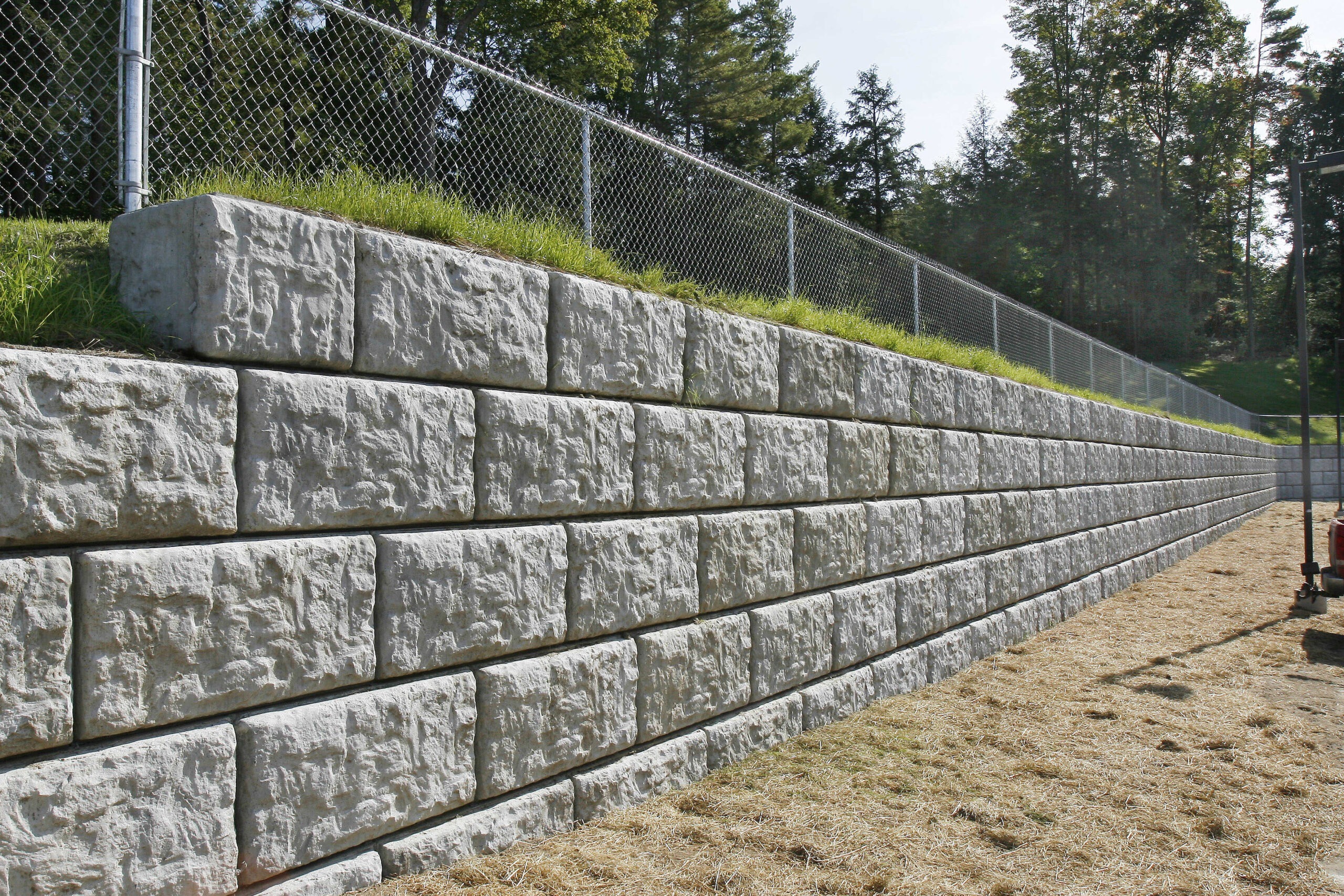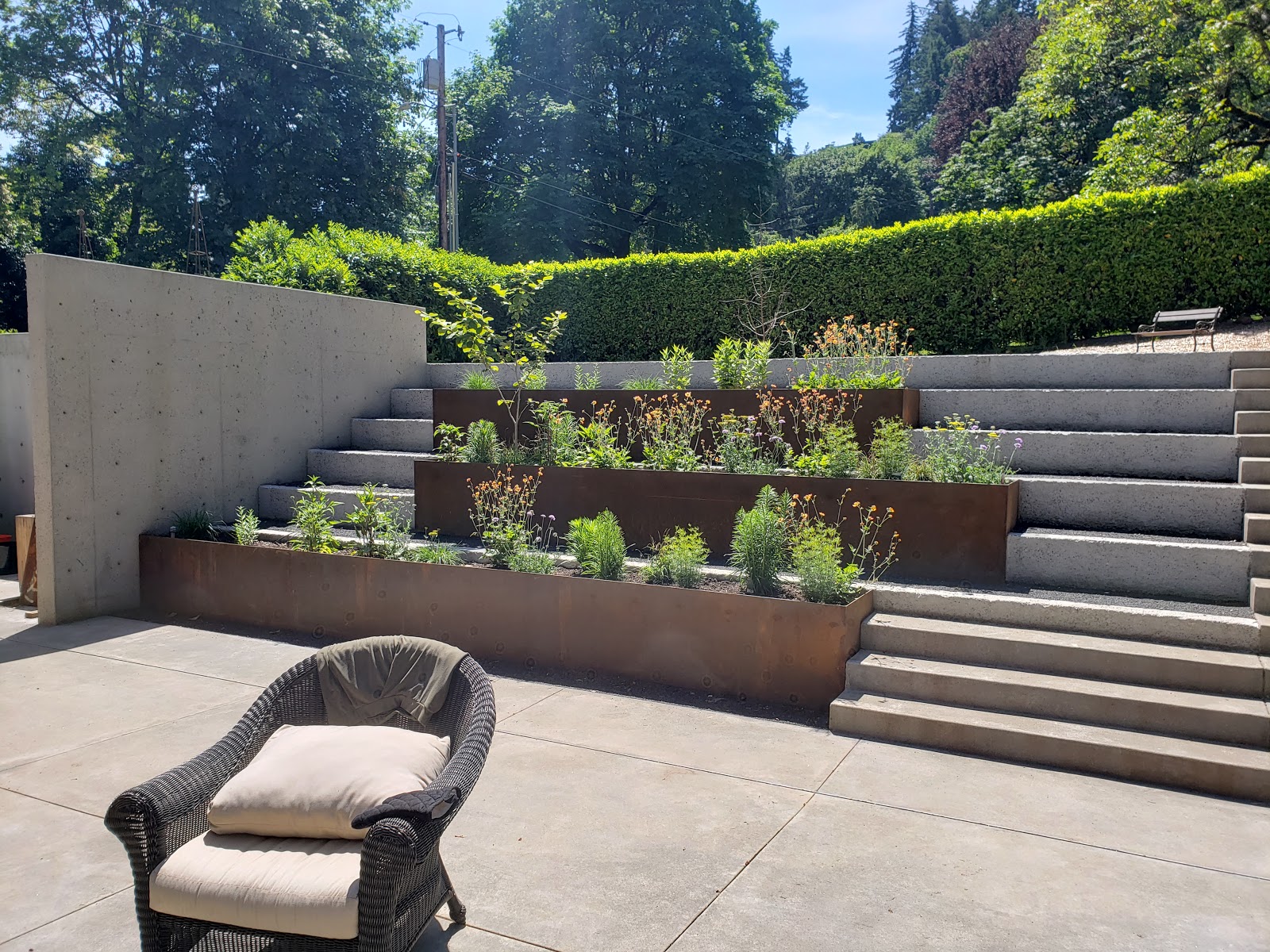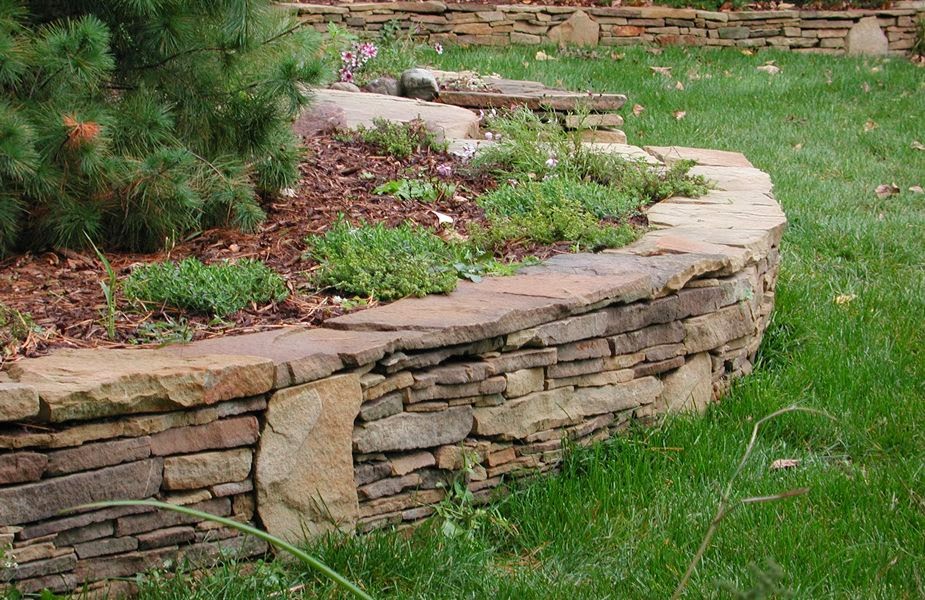If you have a sloping backyard, whether it’s up and away from the house or down and away from the house you might have wondered how to level your backyard. If you called a contractor, landscaper or landscape architect, you probably heard the words ‘retaining wall’ thrown around a lot in conversation. But what is a retaining wall anyway? In this article we’ll review what a retaining wall is. Also, we’ll get into some of the different types of retaining walls that exist. Additionally we will give some pointers on what to look out for whenever you build one.
What Is A Retaining Wall?
First, to answer the question what is a retaining wall, the answer is somewhat simple. A retaining wall is a structural wall designed to hold back earth. If you have a basement in your home, your basement walls are retaining walls holding back the dirt on the other side. Retaining walls make sloping areas useable again. Retaining walls make grade changes (sloping ground) flatter and more useable.
Though retaining walls ‘retain’ earth, they don’t have to be simple utilitarian walls. In fact if you have a sloping yard, retaining walls should be seen as an opportunity to express yourself. Choosing the wall material is one of the most fun parts of building a retaining wall. The finish and feel of the retaining wall can make the difference between an incredible backyard, and a good backyard. You need to be the one to determine what is a retaining wall.
3 Things To Know About Retaining Walls
Building walls can get expensive, and retaining walls are no different. In fact, retaining walls generally have some additional steps which make them more expensive than just building a regular old wall. The need for drainage is paramount with any retaining wall type. You must allow the groundwater to drain and migrate away from or through the wall to relieve the hydrostatic pressure. This is very important everywhere, but even more so in freezing climates, clay soils, and locations with expansive soils.
If all these terms are starting to sound like gibberish, that’s okay. Because the first step whenever you’re thinking about building a retaining wall is to include a structural engineer. When you ask a structural engineer what is a retaining wall, you’ll likely get some strange sounding answers. But trust me, they know best. Whether you’re building a concrete retaining wall or a natural stone retaining wall, getting an engineer to sign off on the design and inspect during construction is always worth the money spent.
Not only will an engineer help determine the best way to build the wall, but they also may be necessary to get the permit to build the wall in the first place depending on where you live.
What Is A Retaining Wall Typically Made Of?
The first type of retaining wall we’ll mention is the least expensive. That is the railroad tie retaining wall, or pressure treated timber retaining wall. Both of these wall types consist of wood beams being used to hold back the earth. When an engineer designs a timber retaining wall, they will dictate the use of ‘deadmen’ which are beams placed perpendicular to the face of the wall.
The deadman extends behind the wall into the backfilled earth. Deadmen are used to help keep the wall vertical after construction. For this reason, one of the added steps to building with wood is you must backfill during construction. You can’t simply finish the wall then backfill, you must backfill during wall construction and compact as well.
Boulder Retaining Wall

If a timber wall isn’t for you, you may want to consider a boulder retaining wall. These are built with boulders you already have on site, or trucked in from a quarry, preferably nearby. These can be quite inexpensive when built with an excavator instead of being built by hand.
Keep in mind though that the excavator built wall will have machine scratches on the boulders, and you may want to space the boulders out over the slope so you can do a lot of planting to cover them up.
However, some people love the look of the boulders and it works just fine. Obviously if you live in some parts of the country, finding boulders is not easy, while in others it’s a readily available building material. When planning your project you’ll need to take into consideration the local availability of materials.
Precast Concrete Block Retaining Wall

Next, there’s the precast concrete block retaining wall. These consist of either the smaller blocks which would be 6-8 inches tall and 12” to 16” wide. These blocks are designed to be installed with the use of geogrid fabric which acts much like the deadmen do, holding the wall vertical when under pressure from the soils from above. Much like the timber walls, you will need to backfill during construction as you go.
There are also larger retaining blocks, some of which are ‘gravity’ systems which have very large concrete blocks which do not need geogrid to function successfully as retaining walls. However, these types of walls will generally require a crane or large excavator to move the blocks around, which adds more potential cost.
Corten Steel Retaining Wall

Then there are corten steel retaining walls. These are generally limited to 4 or 6 feet in height, though it is possible to be taller. These are made from welded plate steel, which is a specific alloy called ‘corten‘. Corten steel is designed to rust. Then the rusted patina seals the surface of the steel acting as a protective coating. Typical carbon steel will also rust, but the rust will penetrate and eventually lead to the complete destruction of the steel over time.
Corten steel retaining walls are great for that modern project where you want something a little different. They are also great in situations where ‘impervious coverage’ is an important consideration. Sometimes zoning laws will allow for restriction on impermeable surfaces being installed on the property. Corten steel walls have a very small footprint for the surface of the wall, often 1” or 1/2” wide, versus a block wall which may be 12 or 24” wide.
Concrete Retaining Walls
Concrete walls are sometimes the best solution. This is especially true for large retaining wall projects, ocean side retaining walls and so on. Concrete is a versatile product, and can be shaped in many different ways. Reinforced concrete walls can seem a bit cold at first, but there are ways to make them feel warmer. It’s commonplace to use rough sawn lumber as forms for poured concrete as this gives the concrete the texture of the wood while providing the structure of the concrete.
Natural Stone Retaining Walls

Natural stone is ubiquitous with beautiful retaining walls. When answering the question what is a retaining wall, many people will first point to natural stone retaining walls. They are some of the most beautiful, and most expensive ways to build a retaining wall. But for some projects, there’s really no better solution. If built properly, a natural stone retaining wall will last generations, and need only minor maintenance throughout the decades to continue looking its best.
What Is A Retaining Wall Summary
If you have a sloping backyard, you may have heard of a retaining wall. What is a retaining wall? This is a structure that holds back the earth from the rest of your sloping yard below. Retaining walls can be made of many different materials. If you’re considering building one, involve a structural engineer.






